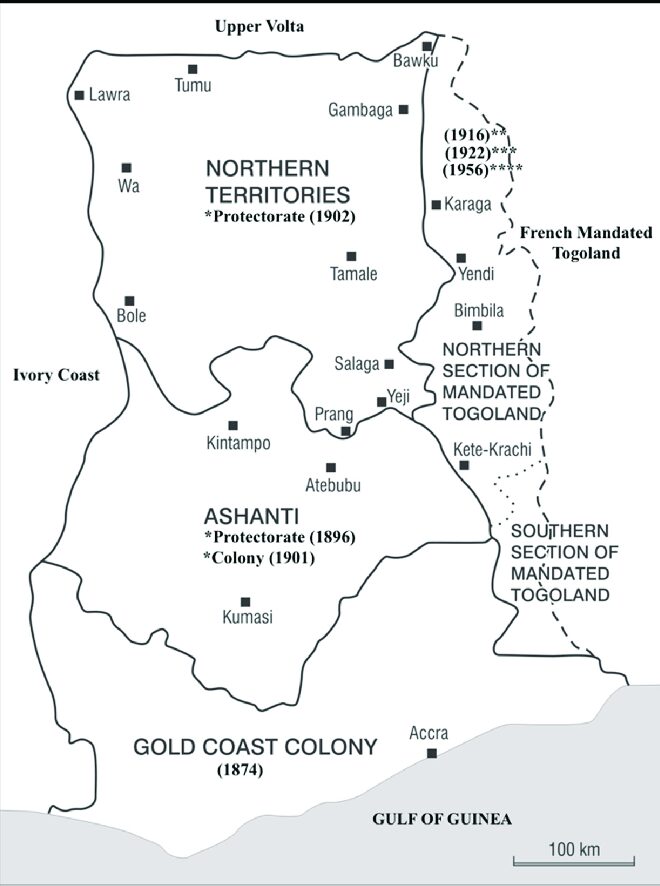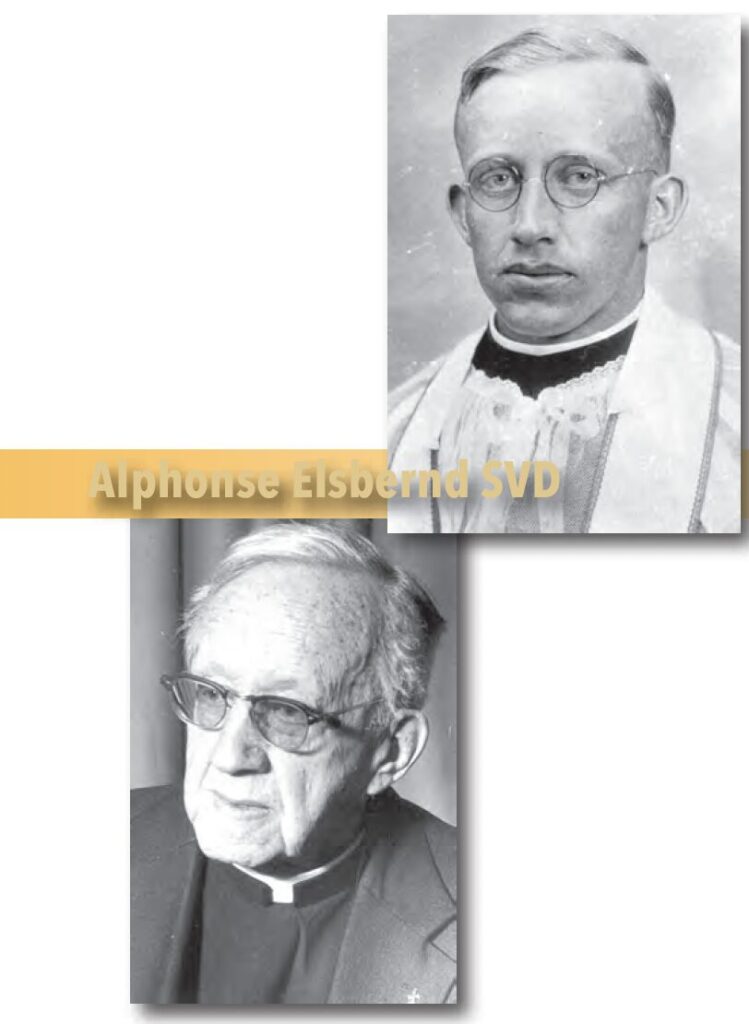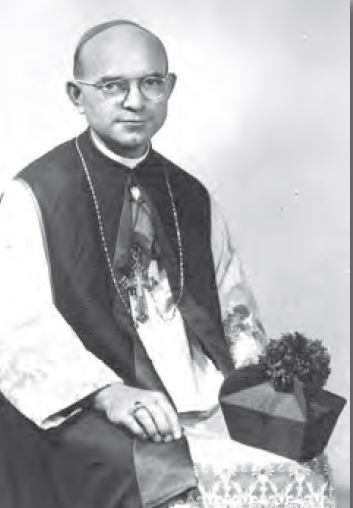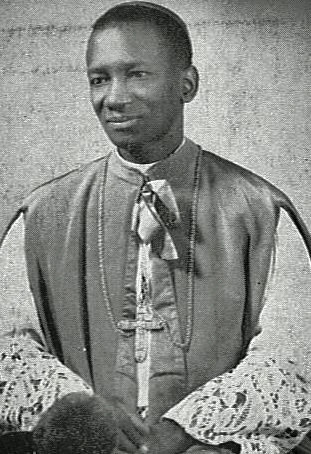Watson loop
Adabraka-Accra
+233 12 345 6789
Communication
Adabraka-Accra
Communication
A journey of faith and commitment from 1938 to the present day

In 1938, the Society of the Divine Word (SVD) received a call similar to that in the Acts of the Apostles, when the Holy Spirit inspired the early Christian Church to begin missionary work in Asia Minor and Europe.
The Society of the African Missions (SMA), which had pioneered the introduction of the Catholic faith to West Africa, sought help from the SVD for its missionary work in the Gold Coast. Overwhelmed by the growing demand, particularly in Accra, SMA invited the SVD to help develop the area that would later become the Accra Diocese.
At that time, only two residential mission stations existed in the region, with evangelization efforts just beginning in Akim and Kwahu. The Krobo and Afram Plains regions remained largely untouched by the Church.

In October 1938, the first SVD missionaries arrived in the Gold Coast. Fr. Alphonse Elsbernd, an American from Festina, Iowa, arrived with Fr. Gehring, a former Togo missionary. Unfortunately, Fr. Gehring became ill and had to return to Germany, leaving Fr. Elsbernd to take over the mission from the SMA priests.
Fr. Elsbernd, the lone SVD in the country at the time, played a crucial role in the early success of the mission. His focus on education led to the establishment of many schools throughout the mission.
He founded the Catholic Mission Educational Unit and became its first General Manager. Under his leadership, schools mushroomed across urban and rural areas, although he often clashed with the Colonial Government Education Department due to his vigorous expansion tactics, significantly shaping the mission’s growth, especially in the education sector.
He pressed for the establishment of key institutions like Mount Mary Training College and Pope John’s Minor Seminary.

In 1938, the Society of the Divine Word (SVD) received a call similar to that in the Acts of the Apostles, when the Holy Spirit inspired the early Christian Church to begin missionary work in Asia Minor and Europe.
The Society of the African Missions (SMA), which had pioneered the introduction of the Catholic faith to West Africa, sought help from the SVD for its missionary work in the Gold Coast. Overwhelmed by the growing demand, particularly in Accra, SMA invited the SVD to help develop the area that would later become the Accra Diocese.
At that time, only two residential mission stations existed in the region, with evangelization efforts just beginning in Akim and Kwahu. The Krobo and Afram Plains regions remained largely untouched by the Church.
During World War II, the mission faced difficulties as no new missionaries could be sent to the Gold Coast until 1945. However, the small band of 12 missionaries—Fr. Noser, Fr. Elsbernd, and others—worked tirelessly under harsh conditions. Fr. Harold Rigney, a priest and scientist, arrived in 1939 and became a chaplain at Achimota Government School. Later, he served in North Africa and became a chaplain in the American Army. Other missionaries, like Fr. Cletus Hodapp, who arrived in 1941, contributed significantly to the mission’s administration and pastoral work.
Despite the difficulties of travel and living conditions, they made astounding progress in establishing the Catholic Church across the region.
After the war, the mission saw renewed growth. In December 1945, new missionaries began arriving. Notable figures such as Brothers James Doerfler and Lucian Orians played key roles in accounting, construction, and maintenance, ensuring the mission’s growth.
Fr. Joseph Bowers, who hailed from the West Indies, became the first missionary in the Krobo area, pioneering efforts there. His work in promoting the role of catechists was crucial in spreading the faith throughout the region. Other prominent figures, such as Fathers George Wilson and John Dauphine, two African-American missionaries, became beloved pastors, while Father Joseph Lauck served as a chaplain in Korle-Bu hospital. Fathers Anthony Bauer and Aloysius Turbek expanded the mission to the Nkawkaw region.
In just seven years, the SVD missionaries built up a network of schools, parishes, and outstations, growing the Catholic Church in the Gold Coast. Their sacrifices and labors in challenging conditions laid the foundation for the mission’s future.
The early SVD missionaries were characterized by their spirit of poverty, commitment, and community. Living modestly, they shared resources communally, much like the early Christian communities. Their sense of commitment was shown through their obedience to the mission’s agenda, frequently moving from one station to another to meet the needs of the growing Church.
Although geographically separated, the missionaries fostered a strong sense of community through regular meetings, recollections, and retreats. This communal spirit helped them persevere through the hardships of malaria, transportation difficulties, and poor living conditions.

When Bishop Joseph Bowers took over from Bishop Noser in 1953, he inherited a well-established framework of the Church in the Gold Coast. Bishop Bowers furthered the development of schools, hospitals, and pious associations. He brought the Dominican Sisters of Speyer into the mission, who contributed to education and healthcare.
Bishop Bowers also founded the Diocesan Congregation of the Handmaids of the Divine Redeemer and oversaw the growth of several secondary schools. By the time he left, the Diocese of Accra had expanded immensely.
The SVD Brothers were instrumental in building the infrastructure of the mission. Brother Joseph Jud, a Swiss architect, designed the Holy Spirit Cathedral, while the Brothers supervised and managed the construction of schools, churches, and other mission buildings.
Their contributions extended beyond construction, as they were involved in education, pastoral work, and technical training. Brother John Heckel, for example, established the automotive department at St. Paul Technical School and contributed to social development projects across Ghana.
Between 1938 and 1946, the SVD missionaries accomplished incredible growth in the Gold Coast. Despite the hardships of World War II and the challenges of a new mission field, they established five residential stations, 91 outstations, and added over 6,000 baptized members to the Church.
Their legacy continued to flourish after 1947, with the arrival of new missionaries and the founding of more institutions, including the vigorous Christian Mothers’ Association by the Sisters Servants of the Holy Spirit (S.Sp.S.).
The heritage of the SVD in Ghana is one of deep spirituality, commitment to community, and tireless missionary work. Their work in the Gold Coast from 1938 laid the foundation for the vibrant Catholic community present in Ghana today.
This legacy is reflected in their Constitutions, which guide their missionary life, and in their communal spirit of living together in service to the Church. As companions of the Divine Word, the SVD missionaries have left an indelible mark on the Church and society in Ghana.
Copyright 2025 SVD-Ghana & Liberia. All rights reserved.
Redesigned by Mbedev